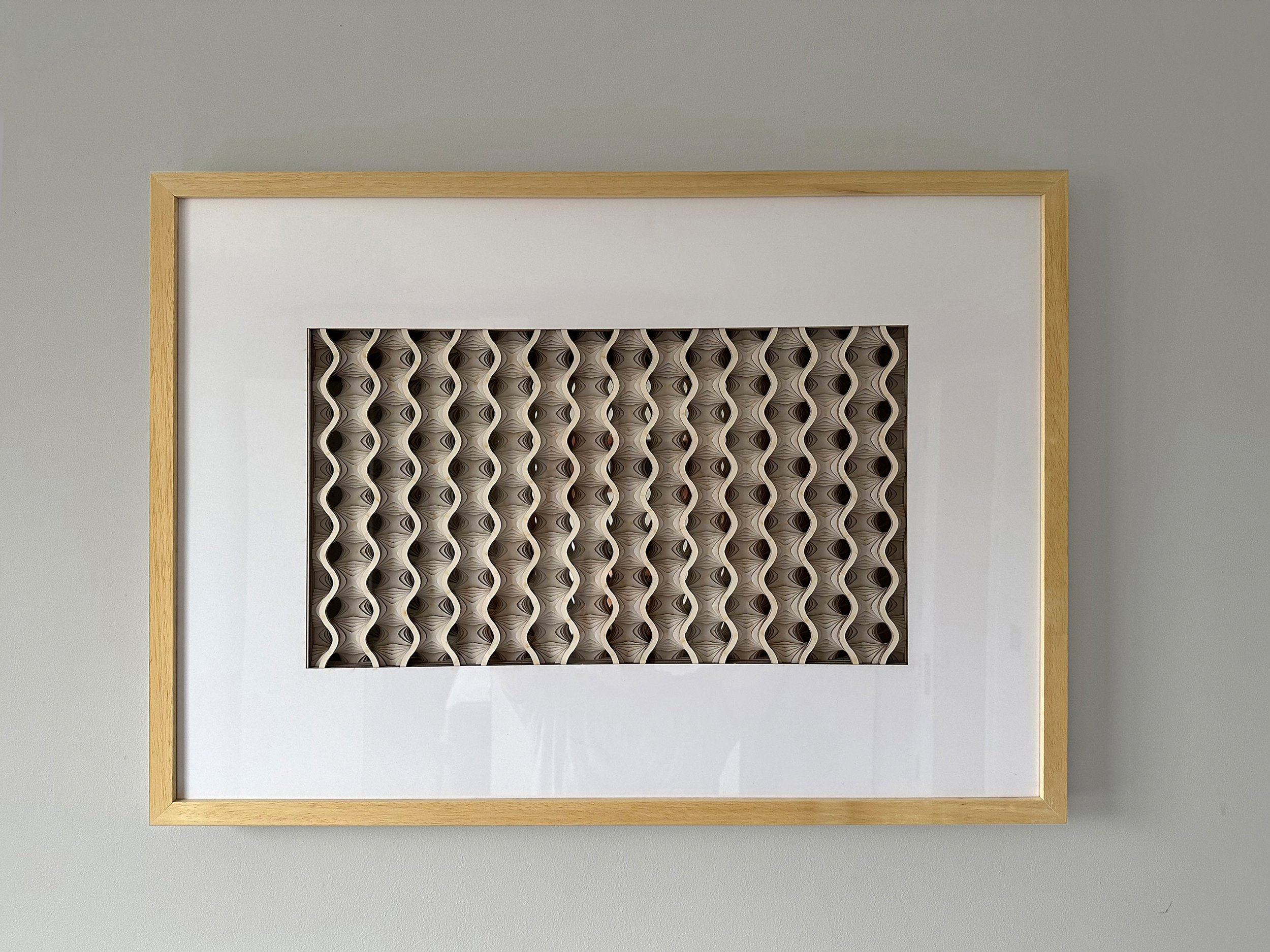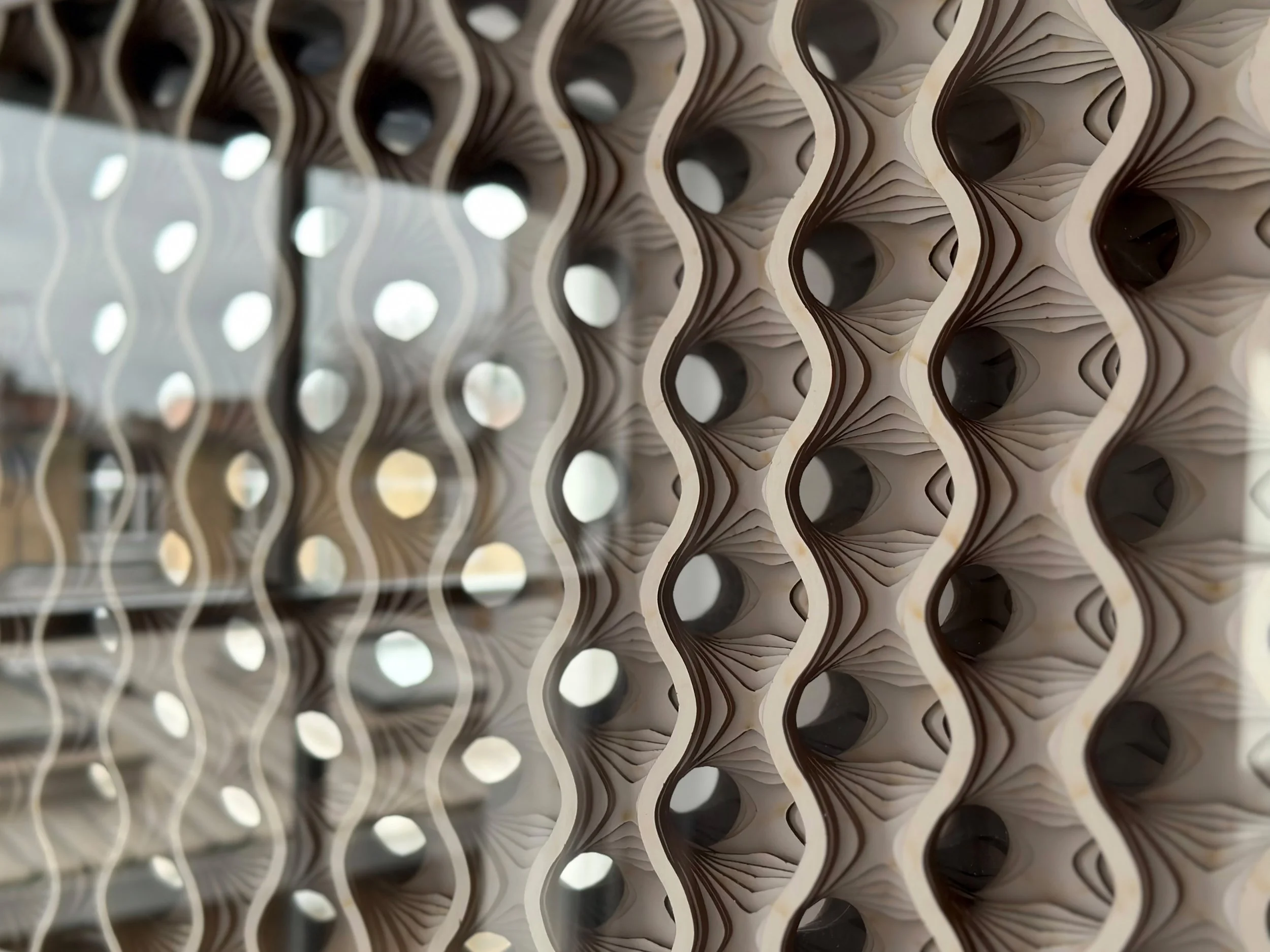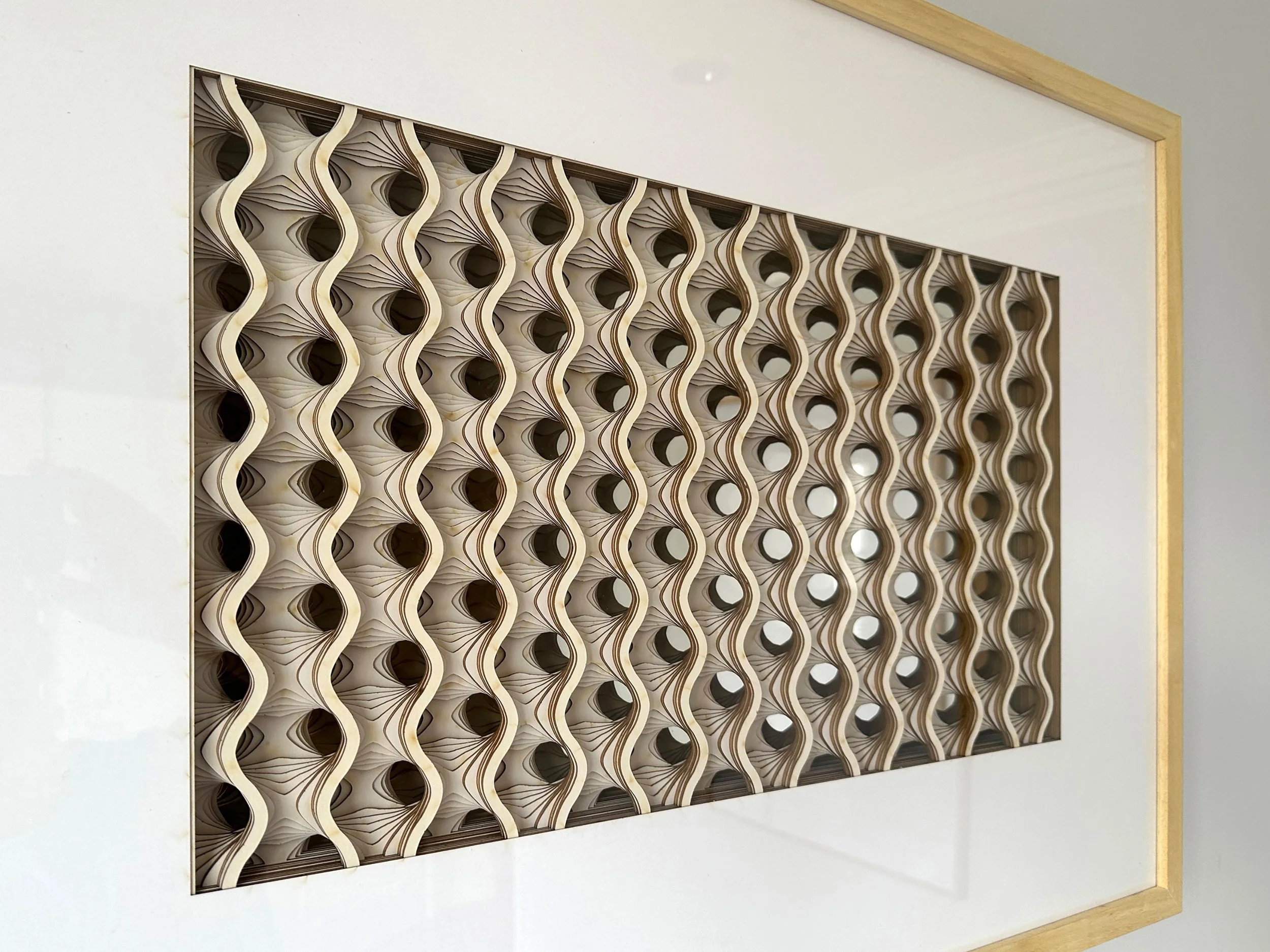
Minimal Porosity 2014
Minimal Porosity is a research-based line of work that started in 2009 with Vlad Tenu’s dissertation Minimal Surfaces as Self-Organising Systems at the Bartlett in London. The key principles of this design have been included into a research paper proposal for ACADIA 2014.
From Self-Assembly to a New Typology of Structures
Minimal Porosity explores the intersection of art, design, and scientific research through the study of triply periodic minimal surfaces (TPMS) — elegant geometries found in nature, from butterfly wings to sea urchin shells. These naturally efficient forms inspire a new way of thinking about structure, material, and form across scales — from jewellery and objects to furniture and architecture.
The project investigates how self-organizing systems, like soap films or cellular membranes, can inform the creation of lightweight, continuous structures with remarkable strength and flexibility. Using computational form-finding and parametric design, these complex surfaces are digitally simulated and translated into modular systems that can be fabricated through 3D printing, CNC milling, or layered manufacturing.
By merging digital fabrication with natural logic, Minimal Porosity proposes a new design language where structure, form, and material behave as one continuous system — a seamless blend of science and aesthetics, efficiency and expression.
At the micro scale, these geometries become delicate lattices for jewellery or small design objects.
At the meso scale, they evolve into modular furniture or sculptural installations.
At the macro scale, they offer an alternative to traditional space-frame architecture — reimagining pavilions, roofs, and façades as flowing, interconnected membranes.
Through computational form-finding and digital fabrication, surfaces once confined to mathematics are made tangible — folded, printed, or layered into porous forms that are both light and resilient. Each piece speaks of an invisible order: the way matter self-organizes, how structure becomes ornament, and how complexity can arise from the simplest rule — the pursuit of minimal energy.

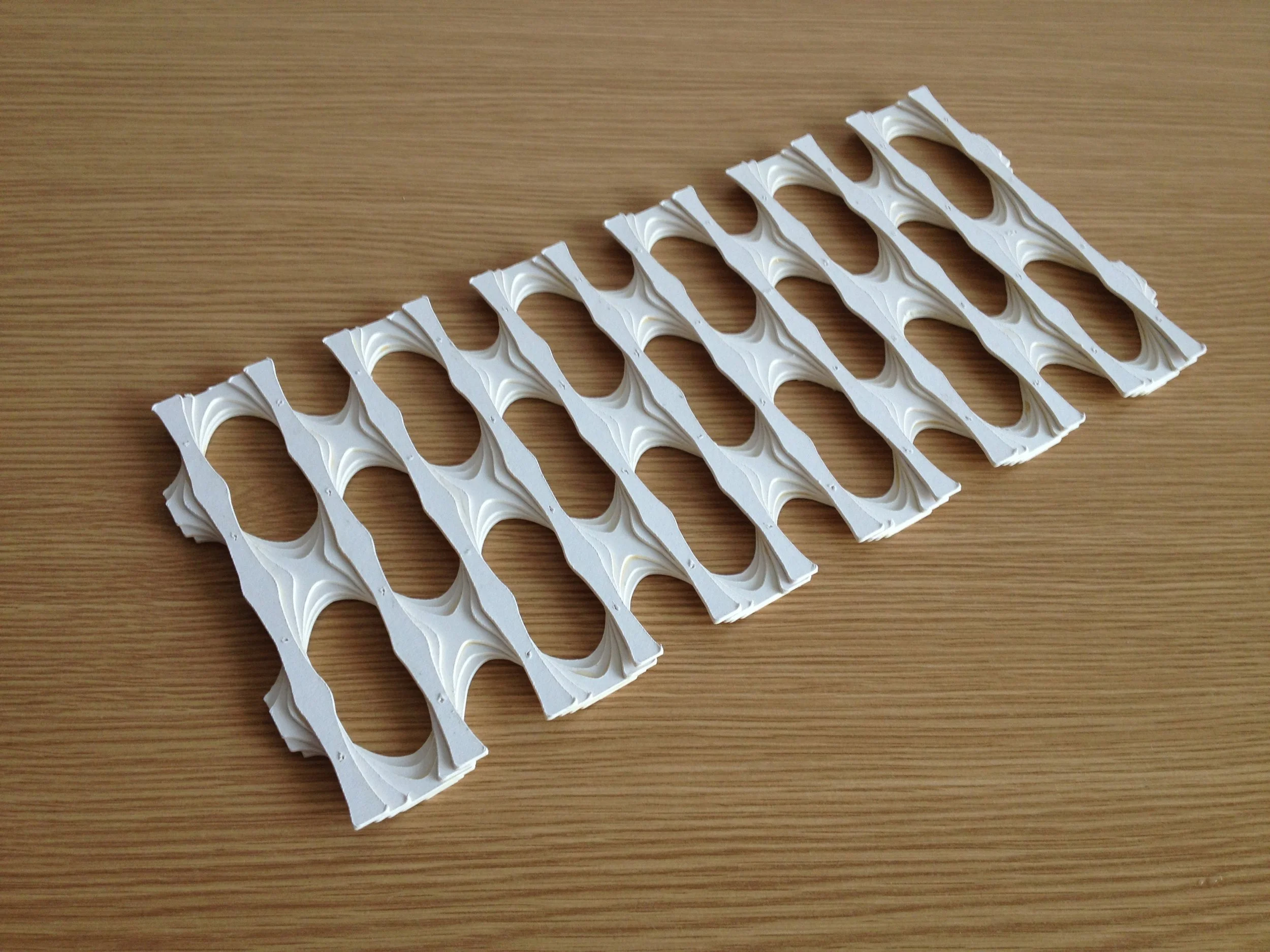
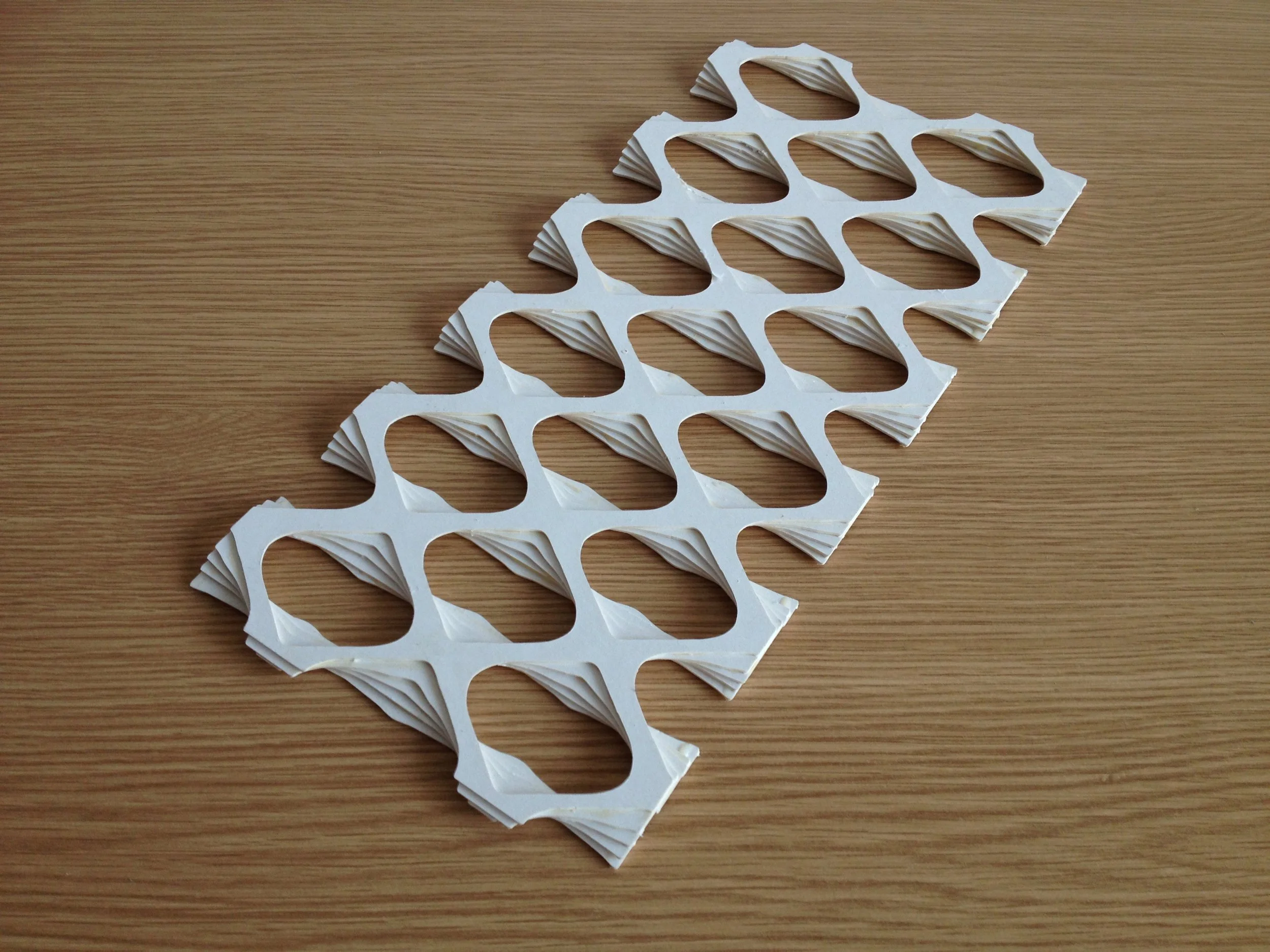



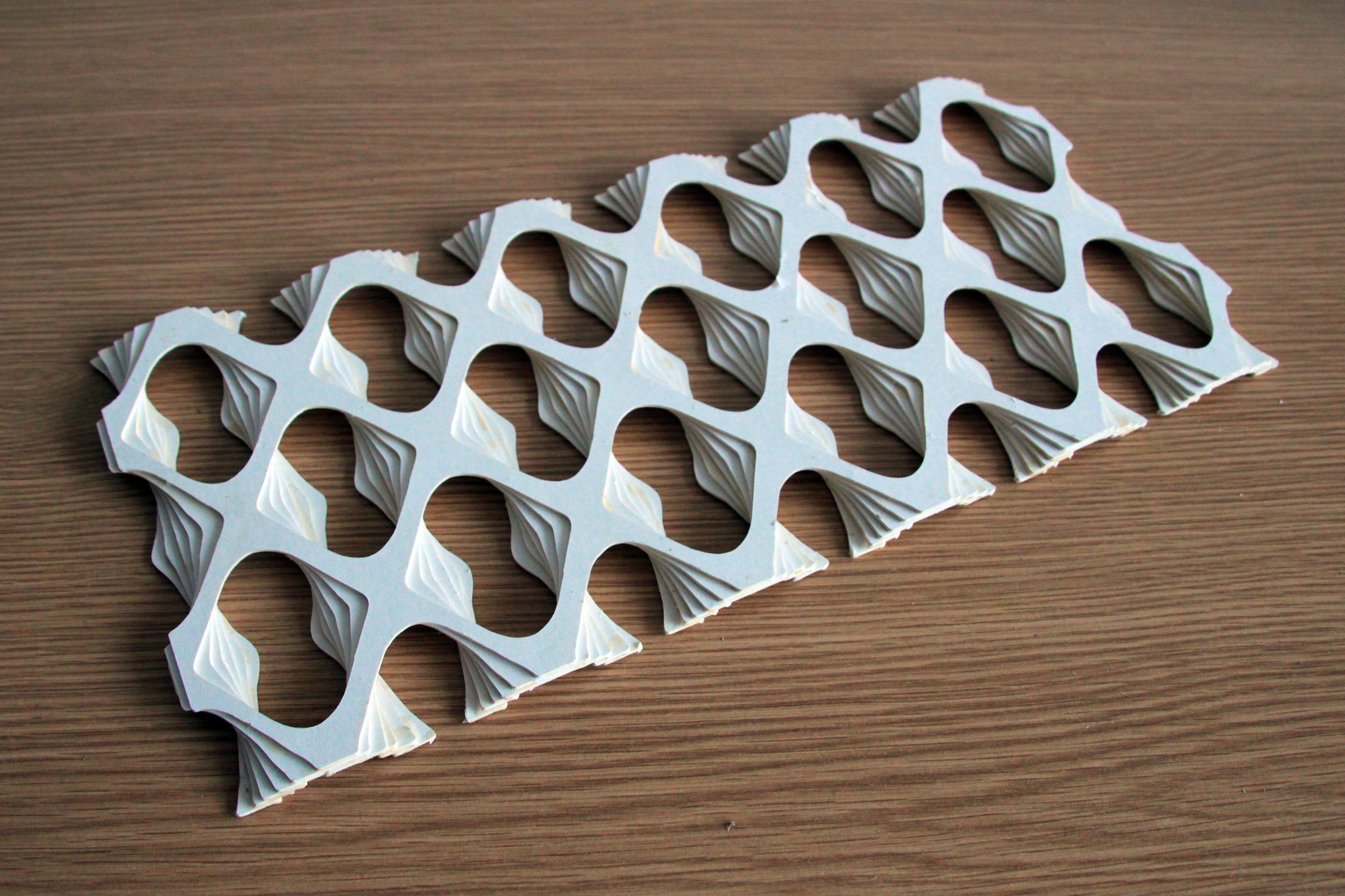
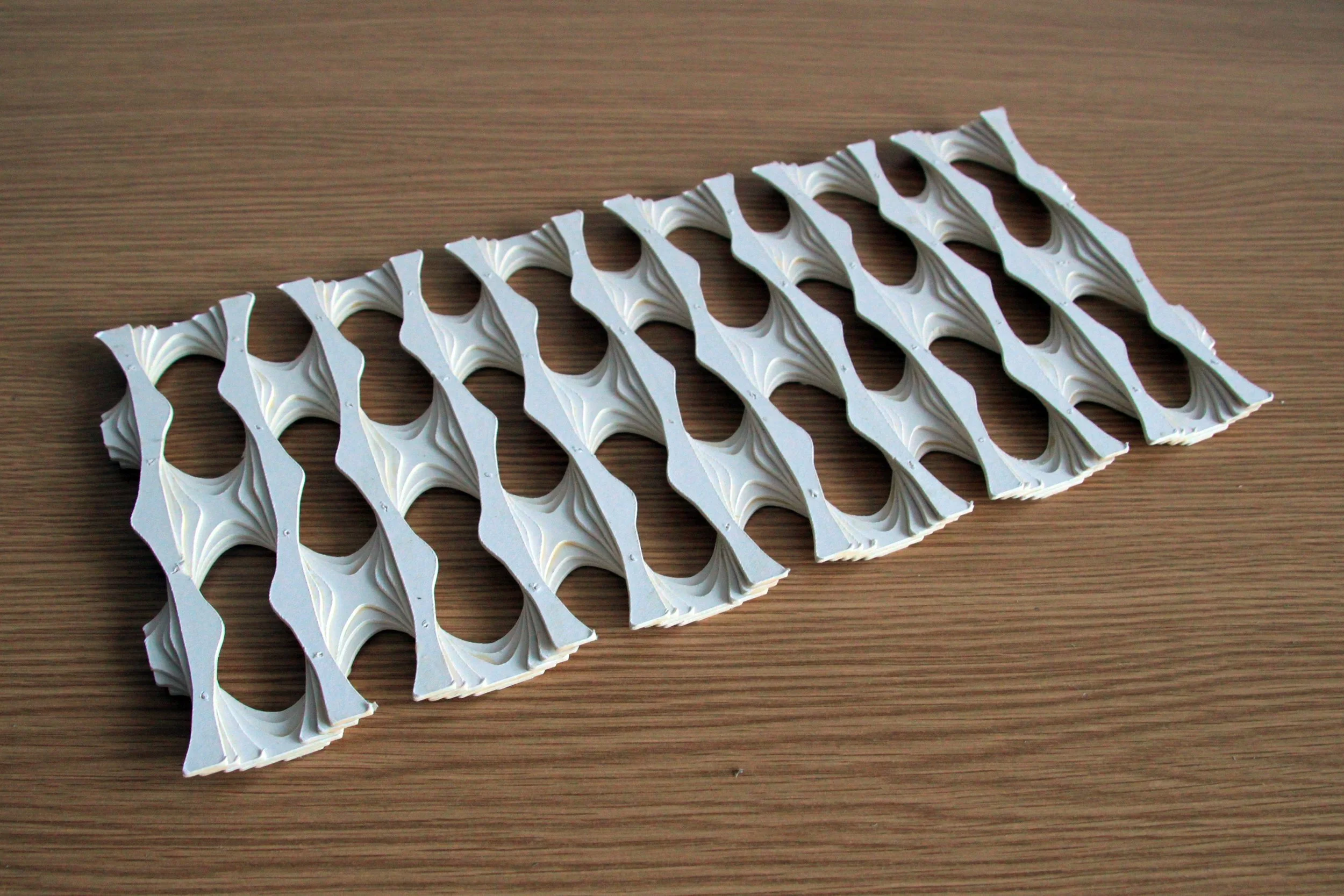
Framed Art
Inspired by nature’s crystalline microstructures, this series of framed artworks emerges from a new mathematical language — a play of optical illusions shaped by three-dimensional fluid geometries and their reflections.
Minimal Porosity is an exploration at the intersection of art, science, and design, where form grows from the logic of nature itself. Through computational methods and material experimentation, these pieces translate the elegance of triply periodic minimal surfaces into tactile, visual compositions that shift between depth and flatness, structure and light.
Each work captures a fragment of continuous geometry — a frozen moment in an infinite system — revealing the hidden order that binds natural and digital worlds together.
